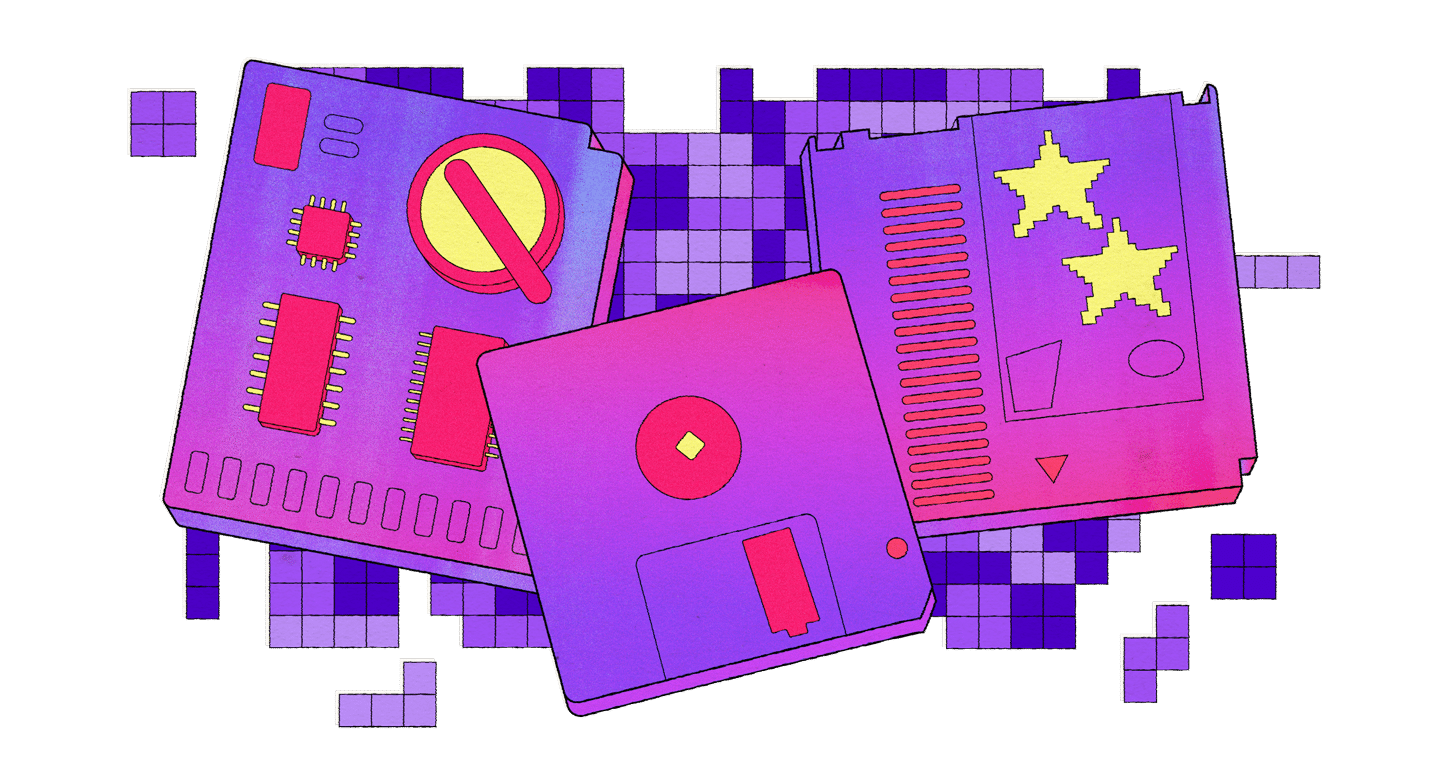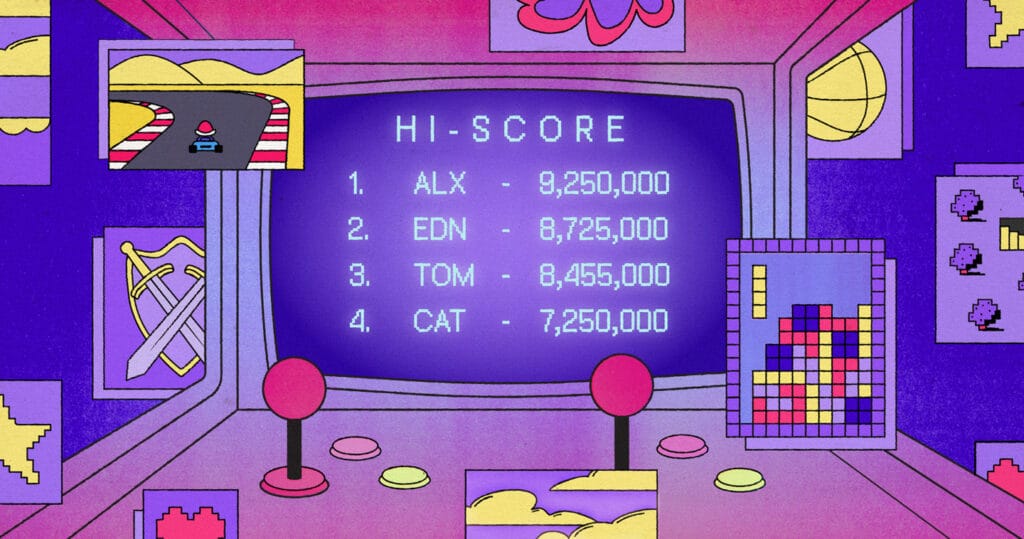Save Points and Memory Cards: The History of Gaming Storage
Ever since the first high score was recorded in a Space Invaders arcade cabinet, saving progress has been at the core of video games. Whether it’s time to take a break, or time to try a risky maneuver, data storage has been there for gamers.
But how did the industry get from the battery-operated cartridges of the ‘80s to the SSDs of today? Tracing the history of storage in gaming, from kilobytes to terabytes, reveals storage as a key driver in the growth of the video game industry—not just in terms of market size, but in the ambitions of developers and the imaginations of players.
Arcades and bedroom coders
In those early days, every arcade game was bespoke. In the nascent industry, there were no tools or shortcuts, so every single machine was built from the ground up. According to Alex Handy, founder of The Museum of Art and Digital Entertainment (The MADE), games went through a lockstep evolution tied to the hardware on which they were built.
“The data and logic of these games were on ROM chips. Some of these machines didn’t have a central CPU necessarily, they were just an amalgam of microprocessors,” said Handy.
The reality was that simply getting the games running was a huge undertaking, which meant making sacrifices.
“Some of these machines, you turn them off, and the high scores were gone,” Handy said. This would eventually change as battery-operated data storage would come to the booming arcade industry, but early on high scores were ephemeral, the stuff of legend.

Inspired by the growing arcade scene, programmers in garages and bedrooms all over the world began making games for their personal computers and storing them on cassettes and floppy disks. Some of these games were recreations of arcade favorites, but just as many were original designs out of a cottage industry of game development.
Because floppy disks were relatively cheap and easy to come by, they helped the industry grow. Games weren’t just for the loud arcades or the pub corner; a distraction that left the mind when you walked out the door. The ability to store the data of the game, and then distribute them via mail, opened a whole world of opportunity for the industry.
Would you like to save?
As the games industry came out of the crash of 1983, a primarily U.S.-based recession caused by market saturation, Nintendo was positioned to shake up the market with some new approaches. Instead of using the universal floppy disk, the Japanese toymaker opted for proprietary cartridges in its Famicom console, also known as the Nintendo Entertainment System.

One of the major impacts of this shift was tamping down piracy, which had contributed to the crash, though it also made it extremely difficult for small developers to publish. The other major impact, though, was related to storage technology.
“The reason that Nintendo went with the cartridge system is simply because cartridges were getting big enough and cheap enough to put out good games,” Handy said. “These cartridges were also battery capable, which meant they could save data even when the console was powered down.”
“This paved the way for Zelda,” he said.
The Legend of Zelda is world-renowned for its place in the annals of gaming history, but the ability to save games on a cartridge is a lesser-known part of its legacy. While games like Wizardry and Ultima for the PC also implemented battery saves, it was Zelda that brought it to the masses and sparked imaginations.
“The Atari 2600 can move those three things around the screen, while Nintendo is able to draw sprites on the screen and move the entire background behind them. Zelda pulls the next screen on in this very cinematic way,” said Handy. “So the stories are getting better because the technology is getting better.”

This exemplifies the heart of the relationship between games and storage; as technology improved, developers could create more expansive stories, ones that lasted for more than one session. These experiences delighted players, and they wanted these virtual worlds to expand. To meet those expectations, games needed higher capacity storage to hold bigger worlds. It began a symbiotic relationship between games and the tools that support them.
CDs, memory cards, and internal drives
This relationship between storage and game scope would drive generation after generation. The 16-bit consoles boasted higher capacity until they eventually were eclipsed by CDs and memory cards. While the console manufacturers used these specs as marketing ammunition, higher capacities elevated games to a true artistic medium.
“CDs completely change the equation. You could mint them for cents on the dollar, and that changed the economics of games,” Handy said of the transition to the CD medium. “Now we can put MIDI samples on here, we can use actors and green screen. Myst is the game that made people go, ‘Oh, that’s what you do with CDs.’”
Thanks, in part, to the cost savings of CDs, as well as the cost savings of Moore’s Law, the industry cooled on proprietary storage over time. Since the seventh generation of consoles, manufacturers have used hard drives from data storage companies, which reinforces the intimate relationship between the two industries. Today, console manufacturers work with storage partners to ensure that the machines meet the expectations of players and developers alike.
Saving for the future
With the advent of gaming subscription services and, eventually, cloud gaming, the storage industry is working hard to ensure that game manufacturers and developers understand the technology available to them.
The industry is a long way from burning floppy disks in the garage, so collaboration is key to pushing the industry forward. By working together, developers can better understand what’s realistic in the data center, or how to account for more players having access to speedy SSDs. On the other hand, companies like Western Digital can understand the goals and aspirations of their gaming partners, and ensure their gaming divisions, like WD_BLACK, are driving toward innovation that powers play.
Artwork by Chris Connolly




